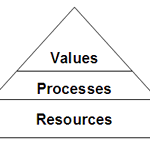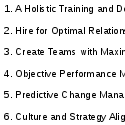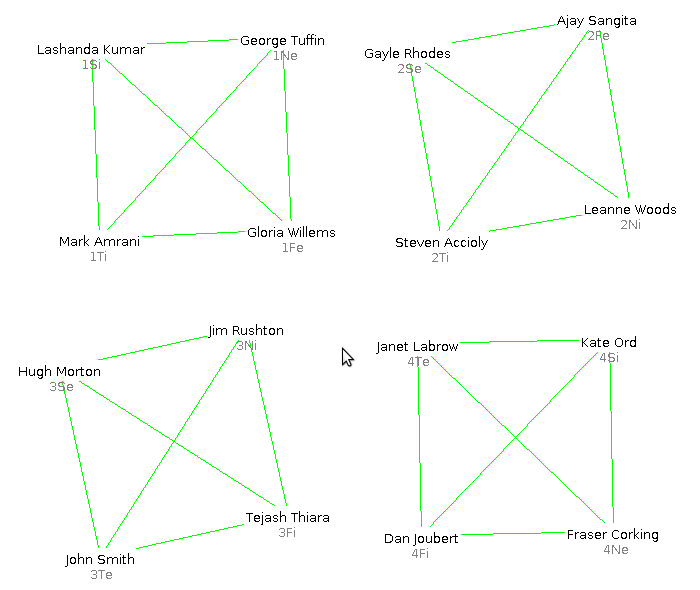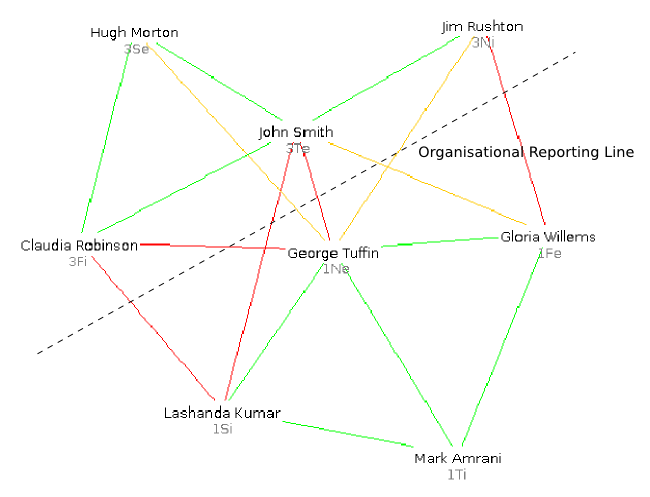Culture and strategy alignment is easier said than done. Management clichés abound with quotes such as 'culture eats strategy for breakfast' and 'we tend to think we can separate strategy from culture'.
Clichés aside, simultaneously outperforming the competition and maximising an organisation's cultural and human capital and sustaining this over a multi-year time horizon is an outcome that many leaders would happily choose.
Clichés aside, simultaneously outperforming the competition and maximising an organisation's cultural and human capital and sustaining this over a multi-year time horizon is an outcome that many leaders would happily choose.
 Combined, the 4G framework and processes make it possible to link human factors with the strategic and operational, enabling culture and strategy alignment.
Combined, the 4G framework and processes make it possible to link human factors with the strategic and operational, enabling culture and strategy alignment.Culture and Strategy Alignment
How it Works
 By combining the other 5 4G processes, a medium to long term transformation programme can be defined and implemented. In essence, this approach uses all elements of 4G, mapped against the organisation’s culture and strategy as shown in diagram 1 below.
By combining the other 5 4G processes, a medium to long term transformation programme can be defined and implemented. In essence, this approach uses all elements of 4G, mapped against the organisation’s culture and strategy as shown in diagram 1 below. Each of the 3 elements of 4G link a human factor to an operational one.
Social Groups are a proxy for culture, the human equivalent of strategy.
Social Relationships equate to teams which in turn map to processes.
Social Profiles analyse individuals which then link to resources.
Social Groups are a proxy for culture, the human equivalent of strategy.
Social Relationships equate to teams which in turn map to processes.
Social Profiles analyse individuals which then link to resources.
Culture and Strategy Alignment
In Practice
Bearing in mind the breath of work involved in culture and strategy alignment, the 3 scenarios below introduce examples of how 4G offers new insights and processes.
1. Understand the Interplay Between Culture and Strategy
In terms of culture and strategy alignment, 4G Social Groups define shared values and group cultures. Diagram 2 introduces each of the 4 different Social Groups. Social Groups are important for two reasons. Firstly, they define ideal or optimal teams of 4 people. Each of the 4 groups of 4 sharing these relationships can be seen in diagram 3. The second reason Social Groups are important is because they create a mirror for the organisation's strategy and commercial values.
Social Group data acts as the cultural equivalent of an organisation's strategy and optimal internal operating environment. Looked at another way, the ideas behind each of the 4 Social Groups correspond to a different stage of the product life cycle.
Social Group data acts as the cultural equivalent of an organisation's strategy and optimal internal operating environment. Looked at another way, the ideas behind each of the 4 Social Groups correspond to a different stage of the product life cycle.
- Social Group 1: Innovators
- Social Group 2: Early Adopters
- Social Group 3: Mass Market/Early Majority
- Social Group 4: Late Adopter/Late Majority
2. Identify Cultural and Strategic Misalignment
As illustrated above, different Social Groups excel in different cultural contexts. Social Group 3 is at it's best in environments where structure and processes are important, along with targets, data, plans and a tactful and diplomatic working style.
Contrast this with Social Group 1 which excels in environments with minimal structure and where originality, experimentation and blue sky thinking are highly valued. Given these differences and their implications for culture and strategy alignment, the information in diagram 4 should come as no surprise.
Diagram 4 shows how everyone in Social Group 3 shares green relationships, but that yellow and red lines are drawn between the people in Social Group 3 and 1. When it comes to alignment, it's easy to see how an initiative or objective that originated from the leadership team in Social Group 3 may lead to delays, resistance and misalignment from the team in Social Group 1. The diagram above shows how culture and strategy alignment efforts can come unstuck as a result of cultural or relational factors. In addition, diagram 4 shows how strategic objectives, culture, processes, team relationships and individuals are all interconnected when seen through a holistic lens and the perspective of alignment.
Contrast this with Social Group 1 which excels in environments with minimal structure and where originality, experimentation and blue sky thinking are highly valued. Given these differences and their implications for culture and strategy alignment, the information in diagram 4 should come as no surprise.
Diagram 4 shows how everyone in Social Group 3 shares green relationships, but that yellow and red lines are drawn between the people in Social Group 3 and 1. When it comes to alignment, it's easy to see how an initiative or objective that originated from the leadership team in Social Group 3 may lead to delays, resistance and misalignment from the team in Social Group 1. The diagram above shows how culture and strategy alignment efforts can come unstuck as a result of cultural or relational factors. In addition, diagram 4 shows how strategic objectives, culture, processes, team relationships and individuals are all interconnected when seen through a holistic lens and the perspective of alignment.
3. Processes to Enable Culture and Strategy Alignment
The 2 examples presented above show how cultural and strategic alignment can be understood and how 4G highlights situations where misalignment may be occurring. To create alignment itself, this is best achieved through a combination of the 5 other 4G processes:
Process 1 - A Holistic Training and Development Syllabus
Process 2 - Hire for Optimal Relationships
Process 3 - Team Creation and Group Cohesion
Process 4 - Objective Performance Management
Process 5 - Predictive Change Management
From the list above, the first 4 processes are easily incorporated into day to day operations. Process 5, Predictive Change Management is event driven and is typically run as part of a project or as a one off initiative.
By combining the benefits and applications of all 5 processes, the net result is a methodology and series of programmes that can be run on an organisational wide basis and where each outcome contributes towards the overall alignment of culture and strategy.
Process 1 - A Holistic Training and Development Syllabus
Process 2 - Hire for Optimal Relationships
Process 3 - Team Creation and Group Cohesion
Process 4 - Objective Performance Management
Process 5 - Predictive Change Management
From the list above, the first 4 processes are easily incorporated into day to day operations. Process 5, Predictive Change Management is event driven and is typically run as part of a project or as a one off initiative.
By combining the benefits and applications of all 5 processes, the net result is a methodology and series of programmes that can be run on an organisational wide basis and where each outcome contributes towards the overall alignment of culture and strategy.
Culture and Strategy Alignment
Return on Investment
An organisation that can align and maximise the potential of its people and its ability to execute strategy is well on the way to achieving market leading results and outperforming the competition.
While the steps outlined above to achieve greater cultural and strategic alignment typically require a time investment of 18, 24 or 36 months plus, the generated returns make the commitment more than worthwhile.
While the steps outlined above to achieve greater cultural and strategic alignment typically require a time investment of 18, 24 or 36 months plus, the generated returns make the commitment more than worthwhile.








